Sony Bravia 8 II vs A95L: how does the successor TV compare?
Sony has replaced the A95L
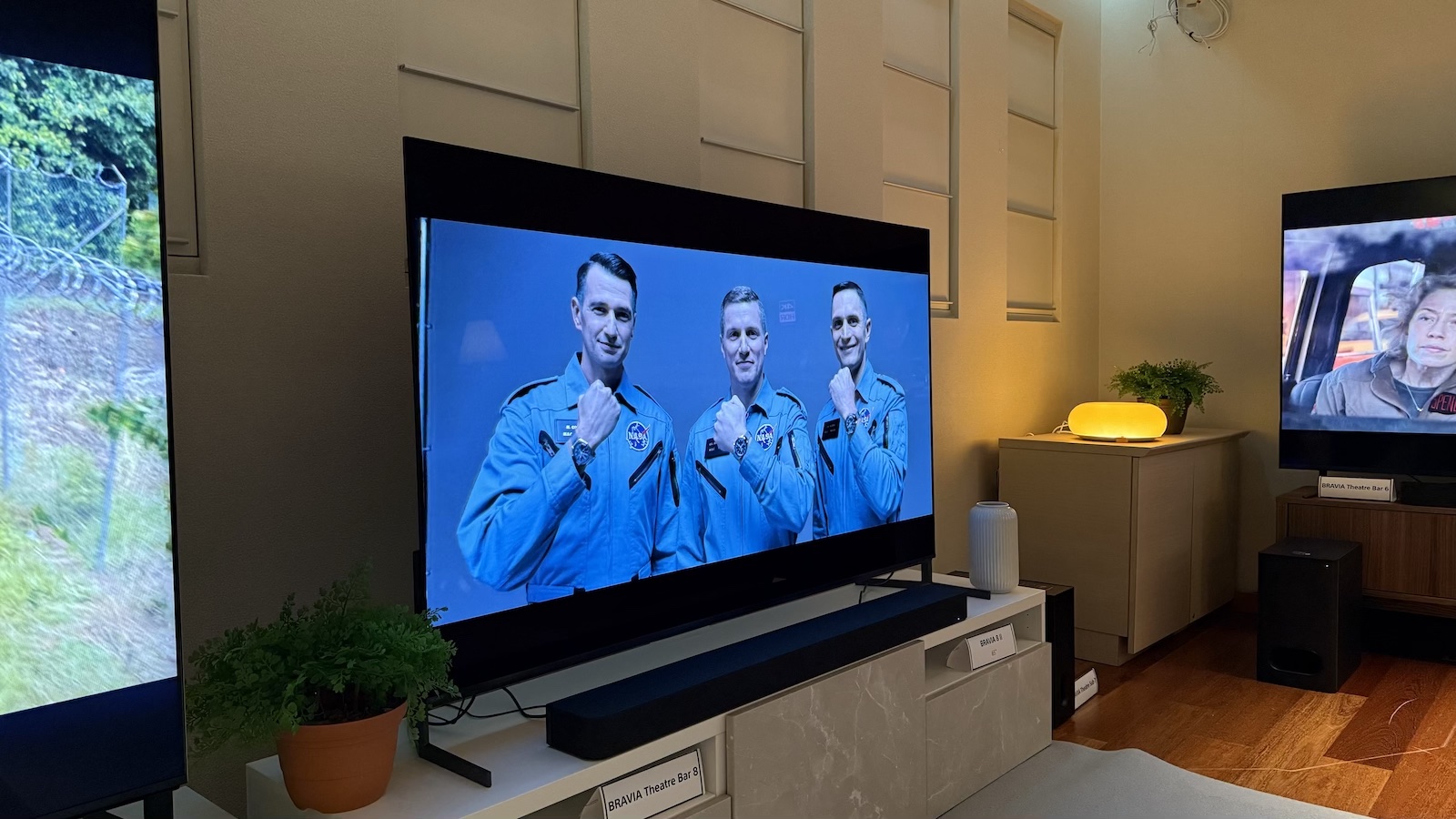
Sony has finally replaced the A95L. Its second-gen QD-OLED TV has been knocking around since 2023, so it was due a refresh.
With stunning brightness and contrast levels, an authentic picture and spacious sound, it's one of our TV editor, Tom Parsons', favourite TVs of recent years.
But is the Bravia 8 II a fitting replacement? And which would you be better off with?
Tom took an early look at the Bravia 8 II at its launch in Japan to find out. These are his opening impressions.
Sony Bravia 8 II vs A95L: price
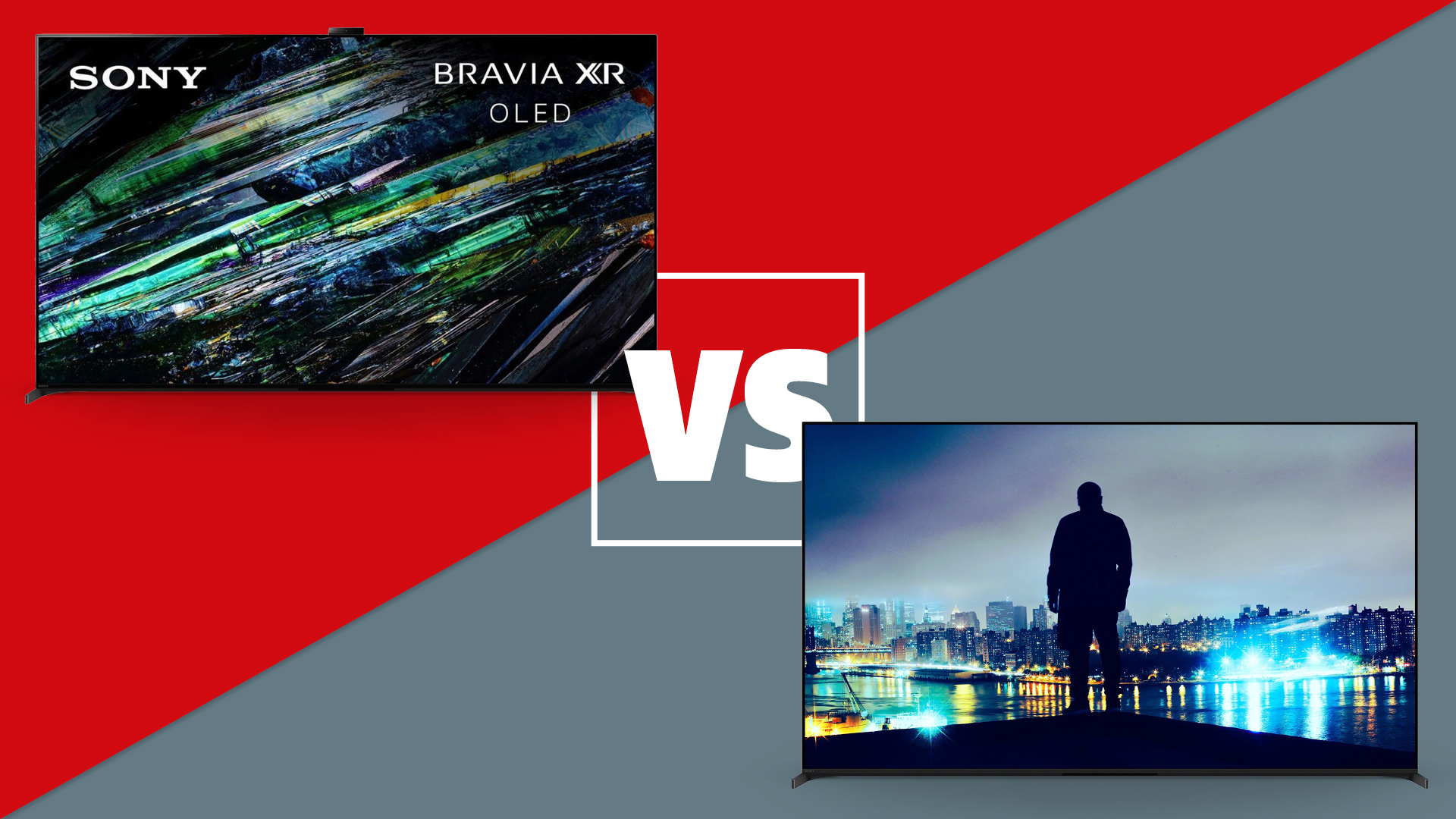
Sony promised that the Bravia 8 II would be more affordable than the A95L. And that's exactly what it is (in the UK, at least). Sadly, thanks to ongoing instability in global markets, it's currently set to be more expensive in the US.
Check out the launch prices (Bravia 8 II Australian pricing is still TBC).
Size | Sony Bravia 8 II | Sony A95L |
|---|---|---|
55 | £2499 / $3499 / AU$TBC | £2999 / $2800 / AU$5295 |
65 | £2999 / $3999 / AU$TBC | £3699 / $3500 / AU$5995 |
77 | No such model | £5999 / $5000 / AU$9495 |
But that's not the full story. The A95L has been around about 18 months now, which means discounts. Even more so now that its replacement has been announced.
You can currently pick up the 65-inch A95L for £2599, which is cheaper than the Bravia 8 II. While the new model will undoubtedly be discounted, you might have to wait a while.
But a lower launch price means that when those discounts do hit, the Bravia 8 II should be even more affordable.
Sony Bravia 8 II vs A95L: design

The Bravia 8 II looks very similar to the A95L. Both have blade-like feet that sit at the TV's extremes of its bottom edges.
Unlike the Bravia 9's, they can't be positioned centrally (unless you opt for the 77-inch A95L), so you will need a fairly wide TV cabinet to accommodate either set.
There are two stand height options for both TVs, to help buyers place a soundbar as needed.
Both TVs stand 3.4cm thin. While the slimmest of Sony's current crop, they're still thicker than rivals' slimmest models due to the built-in sound system, which we'll cover later.
Thin bezels are the order of the day, and they sit flush to the screen to make them even less conspicuous.
It's a smart, modern look that has a lot to like about it.
Sony Bravia 8 II vs A95L: features
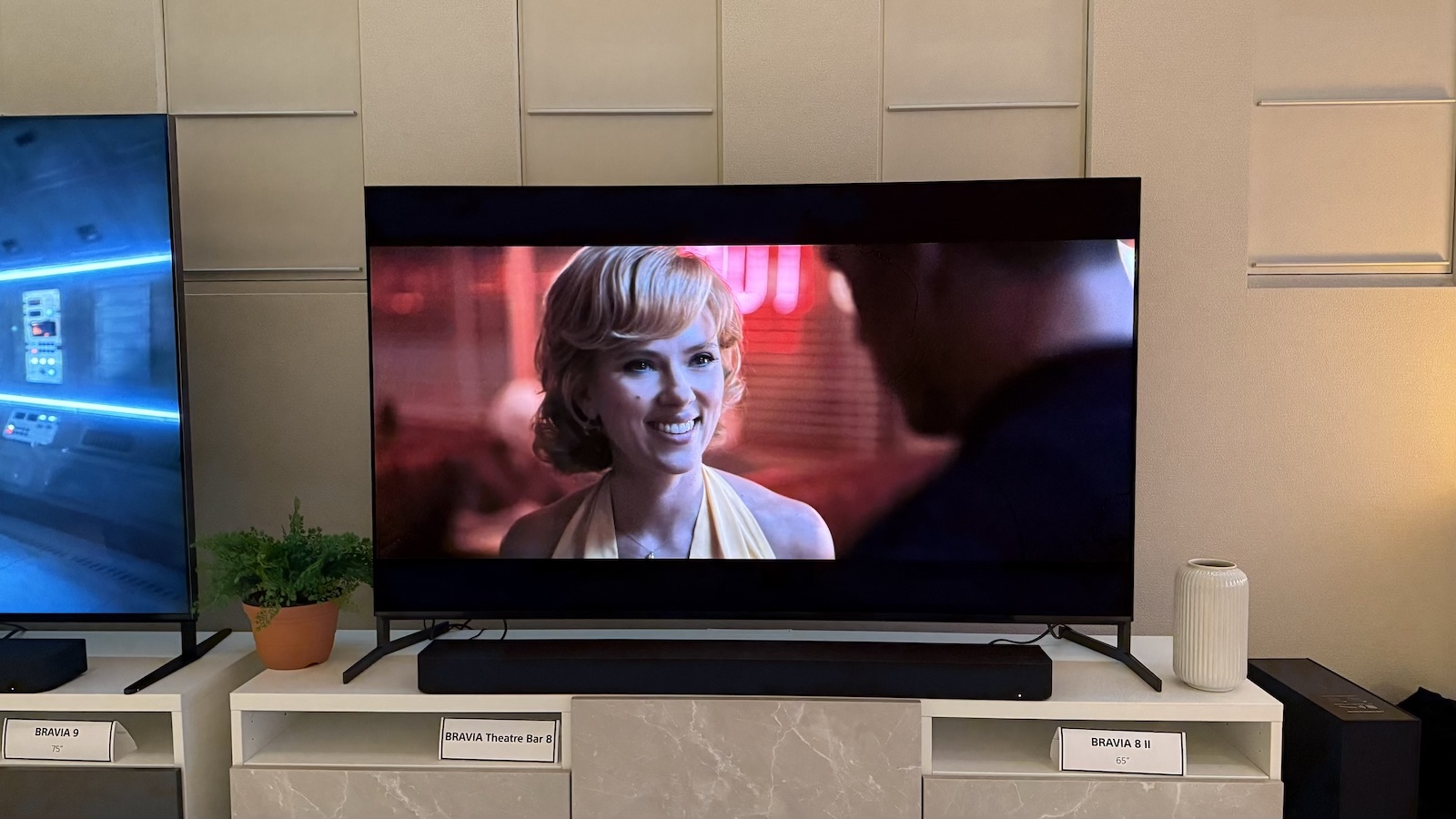
The Bravia 8 II features a newer QD-OLED panel than the A95L. Combined with Sony's upgraded processing, this should help the TV go 25 per cent brighter than the A95L in terms of peak brightness.
Sony also promises increased colour volume and better dark shading.
The A95L is brighter than its predecessor, the A95K, with added anti-reflectivity screen properties, so if Sony's claims are accurate, the Bravia 8 II will be incredibly bright.
Both the Bravia 8 II and A95L are powered by Sony's XR Processor, but only the former features the AI scene recognition system. This detects the scene and optimises the TV's picture in real time to make it look more realistic.
Both only have two HDMI 2.1 ports, which is something we've been complaining about since forever. But gamers can benefit from ALLM, VRR and 4K/120Hz courtesy of those 2.1-certified ports. They also have a dedicated game menu.
The A95L comes bundled with the Bravia Cam accessory, whereas it's an optional accessory for the Bravia 8 II. Its uses still seem a bit niche to us, so it makes more sense as an optional add-on.
The Google TV operating system comes on both TVs. We found the A95L to be slow to start up and its menus are a little sluggish at times (which we also found with the Bravia 9). Here's hoping the Bravia 8 II is a bit nippier.
At launch, the A95L was missing UK catch-up apps like BBC iPlayer, but these have since been added. Sony has a bit of a patchy track record in this regard – fingers crossed the Bravia 8 II has all the apps you would expect straight out of the box.
Both TVs have special 'calibrated' modes for Netflix, Prime Video and Sony Pictures Core. These modes optimise the content to provide an as-the-director-intended experience.
And both also have Dolby Vision and Atmos, IMAX Enhanced and the HDR10 and HLG formats of HDR.
Sony Bravia 8 II vs A95L: picture
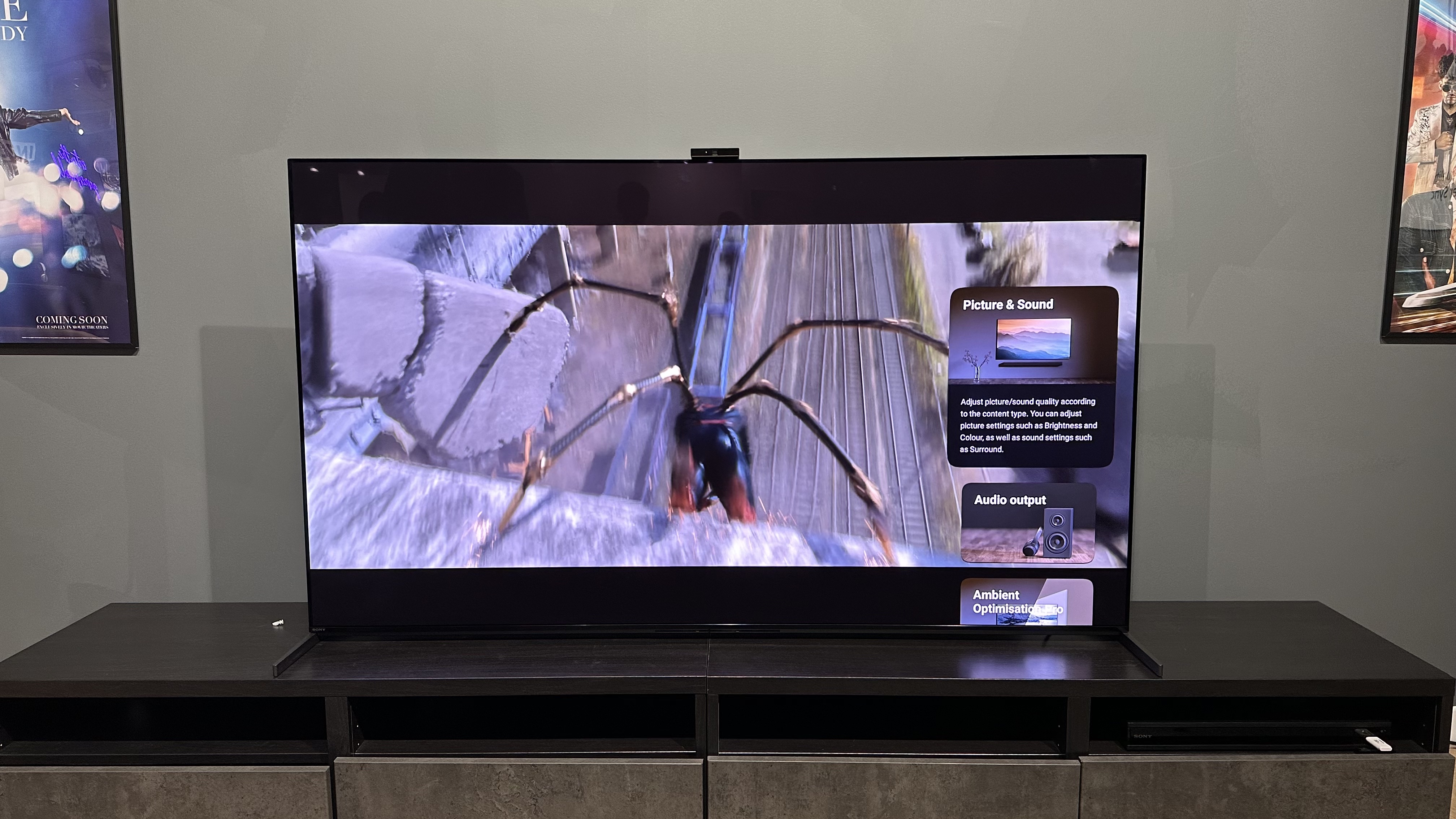
We haven't subjected the Bravia 8 II to our rigorous testing yet. We've only had a demo at Sony's Tokyo HQ. So these are just first impressions, rather than a fully formed verdict.
But we're impressed with the new set. Tasked with Alpha, the Kodi Smit-McPhee movie that's mastered in 4000 nits brightness, the Bravia 8 II handles itself well, both in terms of brightness and detail within those bright peaks.
"The shape of the sun was clearly visible from the Bravia 8 II but murky and indistinct from its rivals, and even the very brightest parts maintained a warmth that the LG G4 in particular couldn’t match," we wrote in our hands-on review.
It also performs well in terms of shadow detail and low-light colour volume. Even in extremely shady sections, skin tones remained clear, consistent and natural.
Pump it up to its most eye-popping settings, and the results are truly exceptional. While we didn't see it next to the A95L, the added brightness was obvious.
It retains that TV's essential character, but moves the dial on a bit in terms of pop, crispness, low-light subtlety and overall quality. Which could be very good news.
We'll update this article once we've reviewed the Bravia 8 II.
When we reviewed the A95L in 2023, we pitted it against the best that rival brands could offer, and it emerged triumphant.
It represented a big leap on in brightness over its predecessors and even peers. Pan, another movie mastered in 4000 nits, looks stunning, with a more intense and accurate peak brightness.
It picks out plenty of detail within these highlights too, giving surfaces lots of shading and texture that rival TVs miss.
But the black elements are just as impressive, with lots of depth and a similar abundance of detail.
"What's more, the A95L also reproduces colours expertly in these darkest parts of the picture so that skin tones remain accurate and lifelike where other TVs allow them to go a bit pale," we wrote in our review.
It all makes for a more solid and three-dimensional image.
Next to the A95L, the Award-winning Sony A80L looks dull and flat. And the A95L doesn't sacrifice subtlety or authenticity like the Samsung S95C does.
In all, the A95L is a superb performer. If the Bravia 8 II can improve on it, it could be stunning.
Sony Bravia 8 II vs A95L: sound
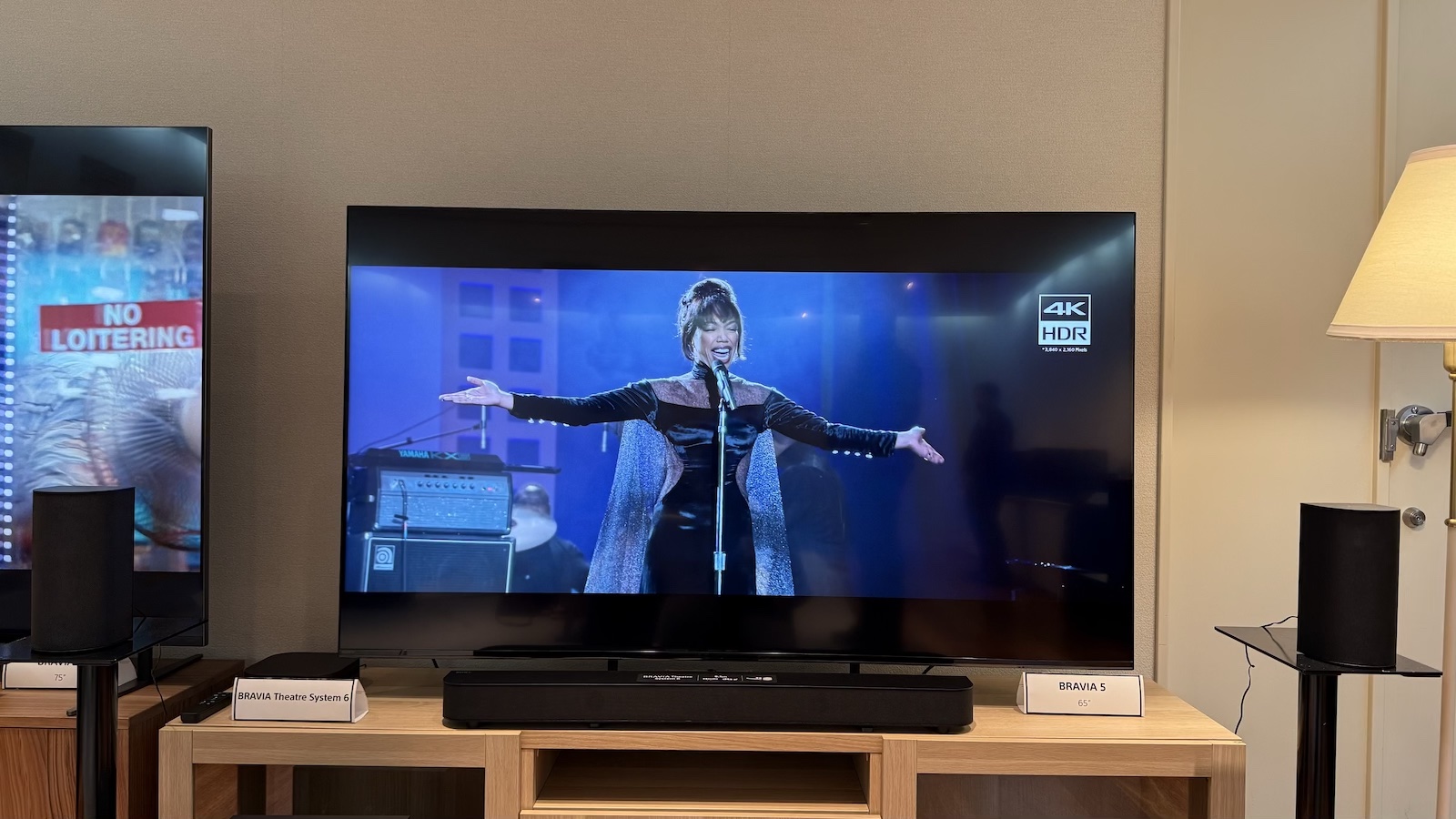
Sadly our Bravia 8 II demo didn't include sound. But given that it has the same audio set-up as the A95L, in a pretty much identical chassis, it should sound the same.
Again, that's no bad thing. The A95L's is one of the best built-in TV sound systems currently available.
Two actuators vibrate the screen in order to create sound that comes from the corresponding part of the picture. It's a remarkably effective way of tying the audio to the visual.
It sounds direct, detailed and dynamic. It even creates a pseudo Atmos effect, though the lack of up-firing drivers preclude it from having true height channels.
Despite the two built-in subwoofers, the A95L is a bit bass light. Like all TVs, it would benefit hugely from one of the best soundbars or best surround sound systems, but if you can't stretch to those, it's still one of the best-sounding TVs available.
Sony Bravia 8 II vs A95L: early verdict
So there you have it. From our initial impressions, the Bravia 8 II seems like the A95L on steroids. Obviously more testing is needed, and we'll update this article once we've given it a thorough review.
But so far, the new model looks like a brighter, more affordable upgrade on the already astounding A95L.
MORE:
Read our Sony Bravia 8 II hands-on review
And our Sony A95L review
Sony 2025 TV lineup: everything you need to know
The best Sony TVs you can buy
Get the What Hi-Fi? Newsletter
The latest hi-fi, home cinema and tech news, reviews, buying advice and deals, direct to your inbox.
Joe has been writing about tech for 20 years, first on staff at T3 magazine, then in a freelance capacity for Stuff, The Sunday Times Travel Magazine (now defunct), Men's Health, GQ, The Mirror, Trusted Reviews, TechRadar and many more. His specialities include all things mobile, headphones and speakers that he can't justifying spending money on.
You must confirm your public display name before commenting
Please logout and then login again, you will then be prompted to enter your display name.
